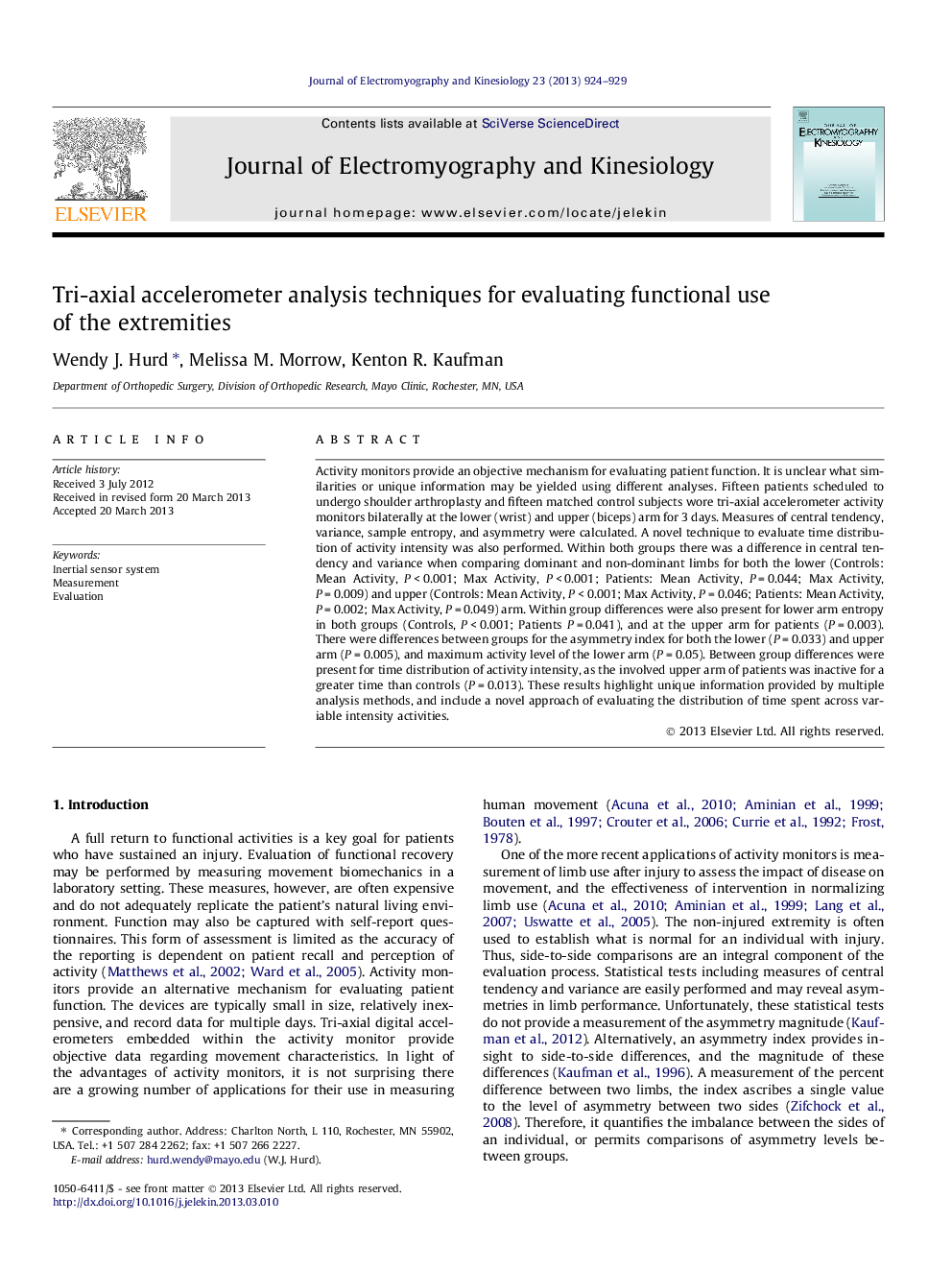| Article ID | Journal | Published Year | Pages | File Type |
|---|---|---|---|---|
| 4064537 | Journal of Electromyography and Kinesiology | 2013 | 6 Pages |
Activity monitors provide an objective mechanism for evaluating patient function. It is unclear what similarities or unique information may be yielded using different analyses. Fifteen patients scheduled to undergo shoulder arthroplasty and fifteen matched control subjects wore tri-axial accelerometer activity monitors bilaterally at the lower (wrist) and upper (biceps) arm for 3 days. Measures of central tendency, variance, sample entropy, and asymmetry were calculated. A novel technique to evaluate time distribution of activity intensity was also performed. Within both groups there was a difference in central tendency and variance when comparing dominant and non-dominant limbs for both the lower (Controls: Mean Activity, P < 0.001; Max Activity, P < 0.001; Patients: Mean Activity, P = 0.044; Max Activity, P = 0.009) and upper (Controls: Mean Activity, P < 0.001; Max Activity, P = 0.046; Patients: Mean Activity, P = 0.002; Max Activity, P = 0.049) arm. Within group differences were also present for lower arm entropy in both groups (Controls, P < 0.001; Patients P = 0.041), and at the upper arm for patients (P = 0.003). There were differences between groups for the asymmetry index for both the lower (P = 0.033) and upper arm (P = 0.005), and maximum activity level of the lower arm (P = 0.05). Between group differences were present for time distribution of activity intensity, as the involved upper arm of patients was inactive for a greater time than controls (P = 0.013). These results highlight unique information provided by multiple analysis methods, and include a novel approach of evaluating the distribution of time spent across variable intensity activities.
